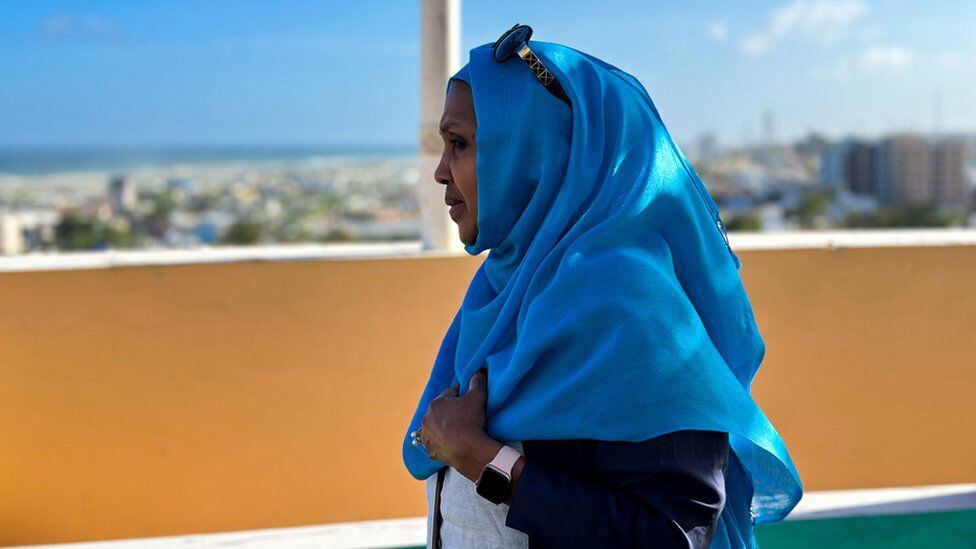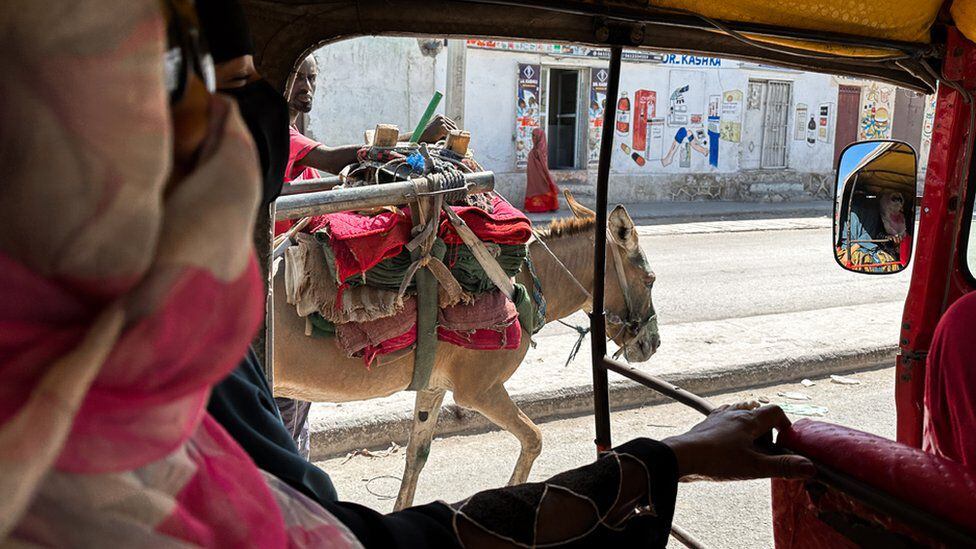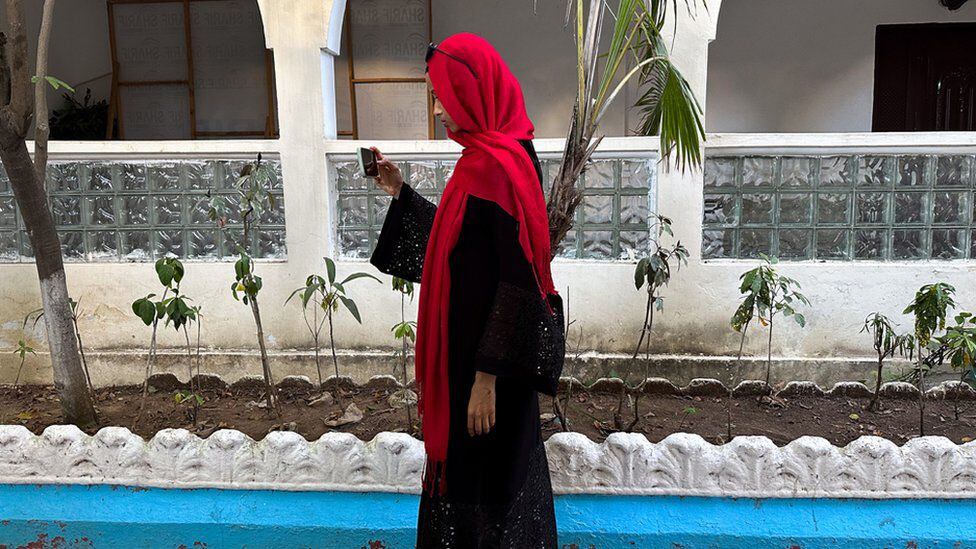Until a few weeks ago, I had never been to my country.
A country where I speak their language and I look like everyone else, but where I had never set foot.
LOOK: The man whose modest house was trapped in one of the most luxurious constructions in Miami because he refused to sell it
that place is Somalia.
But, this month, I followed in the footsteps of countless diaspora children and booked a one-way ticket to the homeland.
I was born and raised in Londonabout 9,700 km from where my family roots are.
Growing up, I was always torn between the idea of what seemed like two very different cities.
I heard about Mogadishu on the news, describing it as “the most dangerous place in the world”.A capital full of death and destruction.
But then my parents would fondly talk about “Xamar,” as the locals call it. They described it as a beautiful city, situated on the longest coastline in Africa, known to many as “the pearl of the Indian Ocean”.
Now, I realize that both versions have some truth.
Many Africans from the diaspora, like me, have returned to their original or ancestral homeland.
Upon arrival, there is often a deep sense of belonging, but at the same time, a melancholy for the differences that being in the diaspora has created.
My parents were born in Mogadishu in the late 1950s and, like many older Somalis, have an idealized image of their country.
“We used to drive around in our convertibles and wear whatever we wanted,” my mom says, recalling her wild adventures and even wilder hairstyles. Today, women are expected to dress more conservatively.
“All you had were goats,” my brothers joke, much to their dismay.
The Somalia we grew up seeing on our TV screens featured Western journalists in displacement camps talking to those on the brink of famine.
In the 1990s, it was because of the war.
But the same images are shown in 2023, as a result of the current instability and climate change.
Surprisingly, the most accurate picture of Somalia I got was through TikTok.
The hashtag #SomaliTikTok has accumulated some 77,000 million visits.
Through social media I was able to get a glimpse of daily life in Mogadishu, through the lens of the locals and people like me.
This pushed me to go and see the city with my own eyes and even consider moving here.

Of course, Mogadishu is still a dangerous place. The group al-Shababaffiliated with al-Qaeda, remains an active threat.
An attack by the organization carried out in October killed more than 100 people.
But there’s another side to the city that’s rarely shown: fear of instability means most Westerners don’t travel freely.
The only white face I have seen was in the confines of the maximum security compound at the airport.
But the true essence of Mogadishu can be found in its restaurants, markets, beaches and in the people.
The city comes to life at night, and it is best to explore it in low (the Somali pedicabs).
“There are six down for each person,” joked one driver.
Familiar foods and flavors remind me of my mother’s food.
African staples like meat and rice are always served with fresh plantains, along with dishes like spicy spaghetti bolognese, something that comes from the country’s Italian colonial past.
Local fishermen carry rare giant tuna, valued at tens of thousands of dollars in Japan, on their shoulders.
Sadly, a lack of infrastructure and investment in the country’s once-booming fishing industry means they are rarely rewarded.
But now that a year has passed since the President Hassan Sheikh Mohamud is in office, there is a growing sense that Somalia is heading towards reconstruction.

“There are construction sites everywhere, we’re slowly improving, God willing,” says my 24-year-old rickshaw driver.
Like many, he has yet to live in a stable Somalia. The war broke out in 1991 and near the 75% of the country’s population is under 30 years of age.
He remains optimistic, but in our conversation the enormous inequality is evident.
Like many people in the diaspora, I have the privilege of choosing to return.
While other Somalis, especially those outside the capital, are trying to leave.
In 2022, Somalia represented the eighth country with the highest number of refugees worldwide, according to the United Nations.
Somalia is one of the most vulnerable in the world to climate and extreme weather events have forced hundreds of thousands of people from their homes, with the worst drought in 40 years now giving way to flash floods.
As we move deeper into the city, I notice the buildings, both new and old, and admire the Afro-Italian Islamic architecture.
They are fortified behind concrete barriers and piles of sandbags. And in almost every corner of the city there is a young policeman armed with an AK-47 rifle.

Calls to prayer are blaring through the speakers and are interspersed with the sound of distant gunshots.
Despite this, I feel a deep hope. And I’m not alone.
The city is teeming with another diaspora, often from Minnesota or Toronto, as well as local Somalis determined to cultivate stability.
“I believe in my country,” a young businesswoman tells me.
She says she never wants to leave.
“We can take back the Somalia our parents told us about,” he adds.
Source: Elcomercio
I am Jack Morton and I work in 24 News Recorder. I mostly cover world news and I have also authored 24 news recorder. I find this work highly interesting and it allows me to keep up with current events happening around the world.

:quality(75)/cloudfront-us-east-1.images.arcpublishing.com/elcomercio/Y7NMXAWQAJFDLB6KTZ5JKY2REE.jpg)

:quality(75)/cloudfront-us-east-1.images.arcpublishing.com/elcomercio/TKLQ2HSAOVHFNMEYTVDRE6HBJI.jpg)
:quality(75)/cloudfront-us-east-1.images.arcpublishing.com/elcomercio/UYCQ7G3MIFBBJPLSIK53AEGM4A.jpeg)

